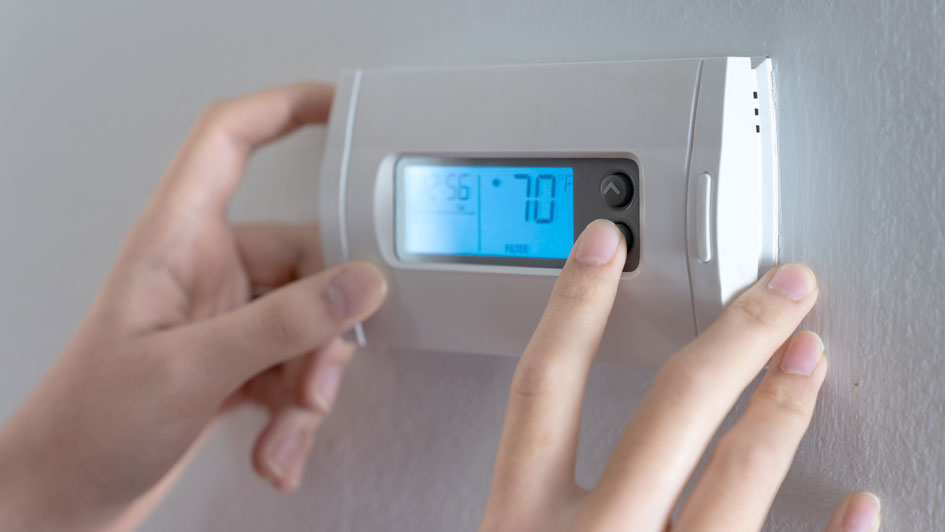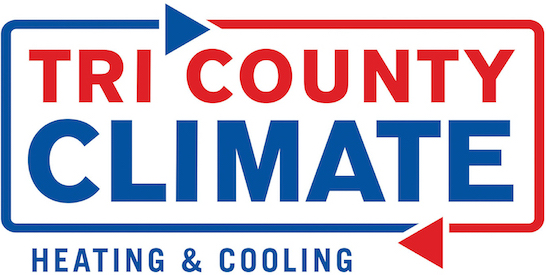
We all like saving money on our monthly utility bills, but it just so happens there’s a way to lower energy use, even when you're not even home.
It starts with your thermostat. By learning more about its special features and settings, you can tailor the temperature to your needs. This means establishing various temperature settings for when you’re home, away or even when you’re asleep.
By trying a few of these schedules, you can enjoy comfy temperatures while also keeping more of your money. Check out our guide on how your thermostat can be a source of energy savings:
While at Home
Whenever you're at home, you want a nice range of pleasant temperatures. For the most part, you probably have your thermostat lower in the summer if you're indoors to make the most of the cool air.
But the ideal temperature for the summer is in fact anywhere between 78 and 80 degrees Fahrenheit. This way, you can stay cool while still lowering your monthly energy bill.
While Gone
When it comes to setting the temperature for when you are out of the house in summer, it’s advantageous to set the thermostat higher than normal.
If your home is in a shady spot in a cooler climate, you can set the thermostat to higher temperatures like 88 degrees while no one is home before lowering it back to the sweet spot of 78-80 degrees once you're home again. This way, your air conditioning system isn't working around the clock to keep an empty house cool.
While Asleep
To enjoy a good night's sleep during the summer, you want a nice cool temperature. A good rule of thumb is between 68-72 degrees Fahrenheit. There's less risk of getting too hot or too cold while you're trying to sleep.
Other Ways to Use Less Energy:
- Install a smart thermostat: Using a smart thermostat in the summer helps save money on energy costs as it forms temperature schedules according to your lifestyle and home environment. They can lower the temperature while you are home or sleeping, before allowing it to warm up when the house is empty. With reliable brands like the Lennox iComfort, you are able to adjust settings and schedules through your smartphone, tablet or laptop. Requesting smart thermostat installation in your Bend home can be the simplest strategy for maintaining comfortable, yet energy-efficient temperatures whether you're at home or across the country.
- Update your existing HVAC system: A new HVAC system can save money in the long run. By investing in a more energy-efficient system, your utility bills will be lower because it requires less energy to reach your preferred temperatures. Air conditioning installation in Bend is a breeze for experienced professionals like Tri County Climate Control LLC.
- Schedule annual AC maintenance: Investing in or ignoring regular air conditioning maintenance in Bend can have a significant impact on your utility bills. With regular cleaning of the coils, checking for damage and keeping vents clear of dust and debris, you may notice your HVAC system run more efficiently. Increasing efficiency also limits strain on the unit and lowers operational costs, resulting in lower energy usage and subsequently, smaller bills.
- Replace your air filter regularly: A regular schedule for cleaning or replacing the HVAC system's air filter saves money by keeping airflow as smooth and consistent as possible. When filters are old and less effective, your air conditioner will have to work harder, and the added strain may impact the system’s life span and result in breakdowns.
- Check if you have enough insulation in the attic: Insulation is a crucial component for any energy-efficient home, keeping the hot air outside and the cool air inside during the summer. The North American Insulation Manufacturers Association (NAIMA) recommends that homes in the southern United States should possess at least 13-14 inches of insulation, while colder climates do better with 16-18 inches.
- Check your ventilation: Damage to the ventilation is capable of increasing your energy bills much more than 20 percent, plus it can also lead to problems with your water heater, clothes dryer and other appliances to get into the atmosphere of your home. Checking your ductwork for leaks and sealing them can fix both of those problems.
- Seal all other leaky spots in your home: Sealing up other leaks in your home with caulk, foam sealant or weather-stripping helps keep things cooler during those hot summer days. You should also check for any gaps around windows, doors and even outdoor fixtures. Devoting time and effort to sealing leaks now can help you save a lot in the long run.

